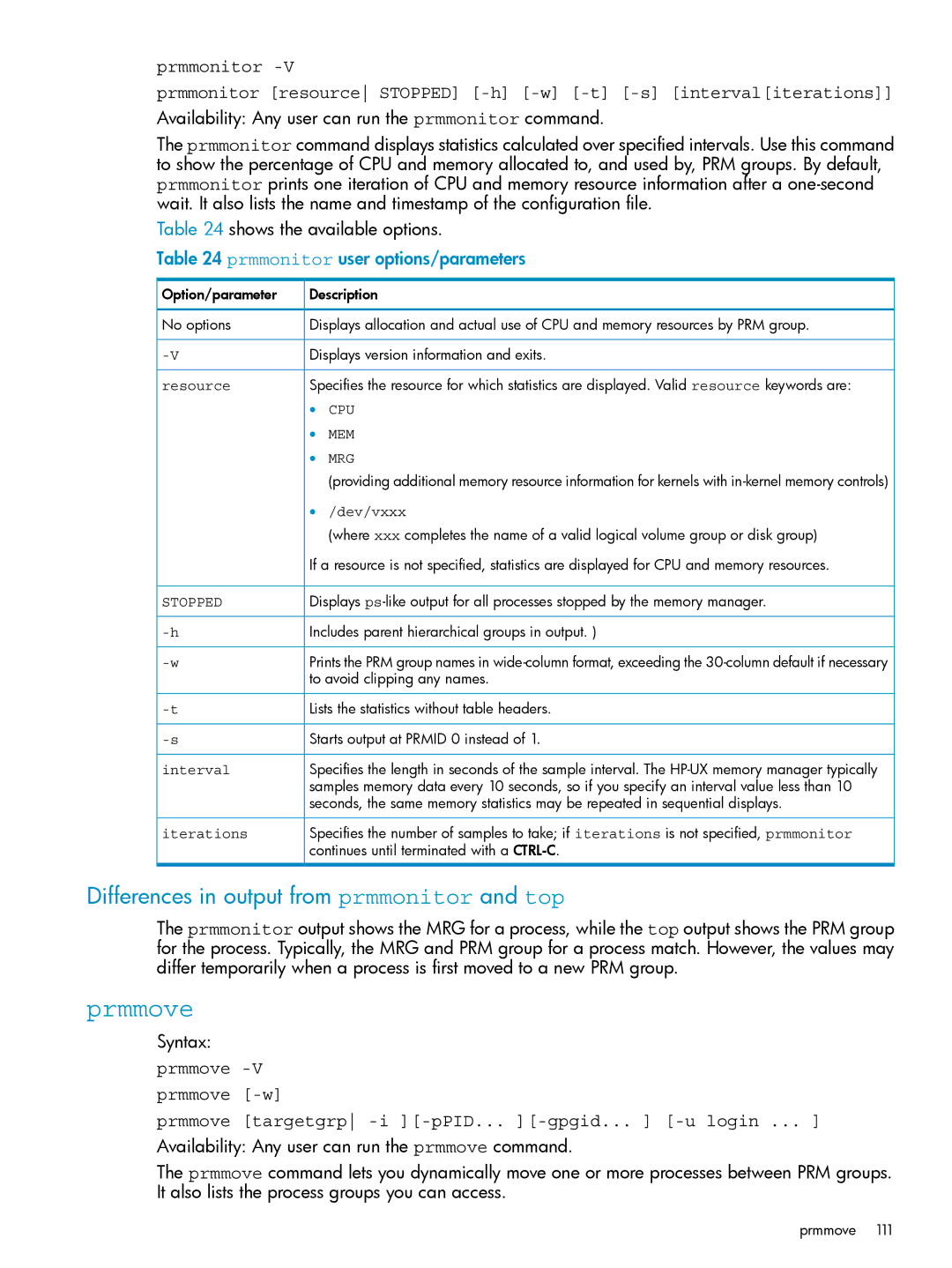
prmmonitor
prmmonitor [resource STOPPED]
Availability: Any user can run the prmmonitor command.
The prmmonitor command displays statistics calculated over specified intervals. Use this command to show the percentage of CPU and memory allocated to, and used by, PRM groups. By default, prmmonitor prints one iteration of CPU and memory resource information after a
Table 24 shows the available options.
Table 24 prmmonitor user options/parameters
Option/parameter | Description | |
No options | Displays allocation and actual use of CPU and memory resources by PRM group. | |
Displays version information and exits. | ||
resource | Specifies the resource for which statistics are displayed. Valid resource keywords are: | |
| • | CPU |
| • | MEM |
| • | MRG |
|
| (providing additional memory resource information for kernels with |
| • | /dev/vxxx |
|
| (where xxx completes the name of a valid logical volume group or disk group) |
| If a resource is not specified, statistics are displayed for CPU and memory resources. | |
STOPPED | Displays | |
Includes parent hierarchical groups in output. ) | ||
Prints the PRM group names in | ||
| to avoid clipping any names. | |
Lists the statistics without table headers. | ||
Starts output at PRMID 0 instead of 1. | ||
interval | Specifies the length in seconds of the sample interval. The | |
| samples memory data every 10 seconds, so if you specify an interval value less than 10 | |
| seconds, the same memory statistics may be repeated in sequential displays. | |
iterations | Specifies the number of samples to take; if iterations is not specified, prmmonitor | |
| continues until terminated with a | |
Differences in output from prmmonitor and top
The prmmonitor output shows the MRG for a process, while the top output shows the PRM group for the process. Typically, the MRG and PRM group for a process match. However, the values may differ temporarily when a process is first moved to a new PRM group.
prmmove
Syntax:
prmmove
prmmove
prmmove [targetgrp
Availability: Any user can run the prmmove command.
The prmmove command lets you dynamically move one or more processes between PRM groups. It also lists the process groups you can access.
prmmove 111
